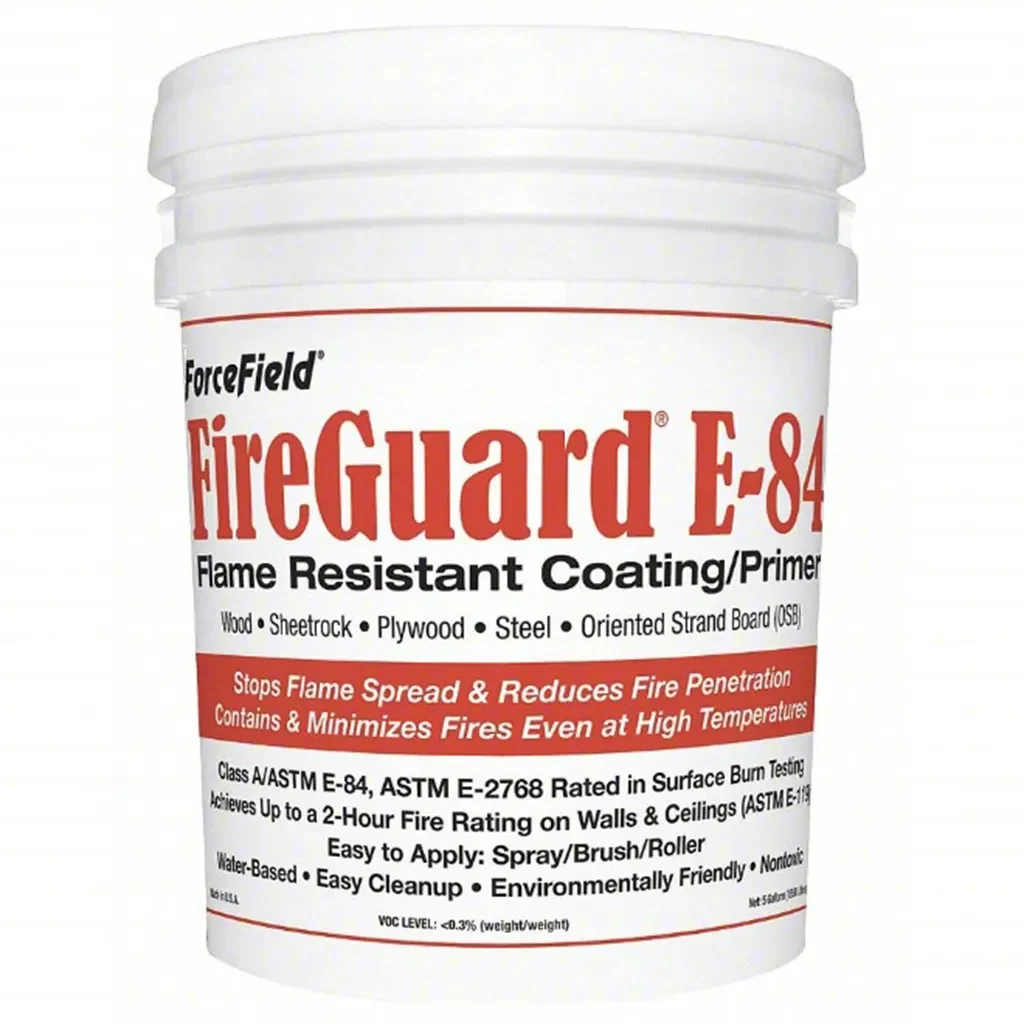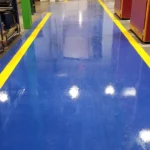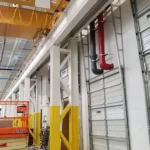Fireproofing a building or a household is something that is getting more and more popular, and in some places, it is even required to get the needed permits and certificates. Throughout history, there have been different ways to fireproof a building, and as knowledge and technology advance, we have found out that there are materials that work far better than others. In this article, we are going to tell you everything you need to know about fire control coatings, and we will talk about intumescent paints and cementitious coatings. Keep on reading to learn why they are so important during the construction process, how the flame control coating services can help you out when you are in need of fireproofing, and why this process is crucial when it comes to safety and prevention.
What are Intumescent paints?

Before we delve into the differences between intumescent paints and cementitious coatings, let’s first see what intumescent paints are, and what you need to know about them.
This is said to be the best, easiest, and most efficient way to protect not only the exterior of the building but also the load-bearing elements. This means that when the load-bearing elements are treated with this type of coating or paint, the delay of the collapse of the building is going to be pretty big, and that would mean that the firefighting services would have far more time to control and deal with the fire without the building collapsing. All the structural elements including the roofs, beams, columns, and floors should be treated with this coating to create a fire-resisting building. When something is treated with intumescent paint, it will help create a fire-resisting surface and prevent huge damage.
The way that this paint works is that when the paint is exposed to great heights, it increases in volume and it decreases in density. This type of paint will get much thicker when it’s exposed to heat and fire, and it will produce char that is created by a huge amount of small bubbles and it will act as an insulating layer.
This type of painting can be added to pretty much any material including steel, concrete, and wood. The main thing you need to be aware of is that depending on the material of which the structure is made of, the intumescent paints have different properties and different levels of protection. What the beams are made of will ultimately play a huge role in the safety of the structure, but in any case, the intumescent paints are going to help protect the building and prevent huge damage.
Fire retardant paint and coating services from Advanced Painting Service can help you learn more about this type of protection, and they can help you decide what is the best way forward when you want to fully protect the structure while it is being built.
What are the advantages of Intumescent paints?
When it comes to the advantages of intumescent paints, you should know that different advantages come with different types of paints and coatings. Before jumping to conclusions and before thinking that every single advantage or drawback applies to every type of coating, it is best to consult with fire resistant painting & coating services that are going to give you more information depending on the exact type and brand you have chosen. Some of the types have pretty low dry film thickness and that is important when it comes to structures where the initial thickness of the coating is important. Some of the types are best suited for indoor environments while others are best used outdoors. If you are choosing something that would be best for closed quarters, then you should go with the water-based cool things. Note that while some of the types may be bad for the environment, others are labeled as green and they are pretty eco-friendly. There are models of intumescent pains that have pretty fast drying times, meaning that you will not have to pause your construction process to wait for the pain to cure. If you are looking for something that can be applied in harsh environments as well as offsite, you should know that some of these intumescents can be perfect for that. Note that you can choose between single and multiple-layer applications, and some of the coatings give a much smoother finish there than others, meaning that the overall look of the structure will not be changed because of the fireproofing process.
What are the disadvantages?
The disadvantages mainly depend on the type of coating that you are using. As we previously mentioned, some are going to be far more expensive than others, so keep your budget in mind when choosing the exact coating for your needs.
Some of these coatings are going to be far more durable and more fire resistant than others, and you should also know that with some of the models, several coatings are going to be needed to achieve full resistance. Keep in mind that some of the models are best suited for indoor use, and this means that if they are applied outside, and if the structure comes in contact with harsh elements, the painting may lose some of its properties.
Even though there are not a lot of disadvantages that come with these paints, it is best to consult with flame control coating services that are going to help you figure out what is the best for your needs, and how to avoid the most common disadvantages that come with specific types. The biggest disadvantages come only when you choose the wrong type of painting for the structure, so make sure you do enough research and collaborate with professionals to avoid any potential mishaps.
What do you need to know about these paints?
Now that you know the basics about intumescent paints, let’s see what else you need to be aware of. You should know that there are different types of this coating, and the most common ones include water-based, epoxy-based, and solvent-based intumescent paint.
All of these are used in different types and conditions, and some are more or less expensive to produce. The most budget-friendly option is the water-based intumescent, and these coatings are usually more eco-friendly and they do not smell as harshly as some of the other paints. They need a lot more time to finish curing, and they may not be as protective in every environment as the rest. Epoxy ones are the most expensive option, however, they can help not only with fireproofing but also insulate steel elements and help them become resistant to corrosion. Finally, the solvent-based ones dry the fastest, they have a smooth finish, and they are possibly the best option when it comes to resistance to weather conditions.
Depending on the type of paint that you have chosen, the paint should not take longer than two hours to dry after application. Nevertheless, weather conditions play a huge role in this, so in some cases, you may need to wait up to 24 hours for the coating to finish curing.
Finally, when it comes to lifespan, you should know that your structure should be completely protected for at least two decades after applying these types of coatings. When you collaborate with intumescent coating services, they are going to give you more information when it comes to the lifespan, and time needed for curing, as well as the advantages and disadvantages of the exact type of coating you have chosen.
What are cementitious coatings?

If you want to protect the surface of the structure from not only fire, but also water, mold, and mildew, then the best option to go with is cementitious coatings. There are different types of these coatings, some of them come in the form of a spray, while others need to be applied with a bit more precision, and they are applied only to certain structures of the building. They are most commonly used for the structural, and load-bearing beams, however, they can also be used in other parts of the building.
They consist usually of gypsum or cement, and when they get wet and applied, they form a surface that is extremely durable weather resistant, and they have pretty high fire resistance.
Depending on the type of coating that is used, sometimes only one coating will be enough to protect the structure, however, if you want a bigger resistance, and if you want to increase the structural integrity, then you can use several coatings of the cement. Nevertheless, just like we mentioned for the other paints, it is best if you consult with a professional to see which is the best option depending on the structure that you are trying to protect.
What are their advantages?
When it comes to the advantages of cementitious coating, you should know that this is probably the most budget-friendly option available on the market, and this material is far lighter than traditional concrete. Many people are making the mistake of thinking that a cementitious coating is the same as concrete and that when it is applied it’s going to add a lot of weight to the structure. This couldn’t be further away from the truth, and you should know that this option is most likely going to be far cheaper than any of the other fireproofing methods.
When this coating is applied correctly and professionally, it’s going to provide long-lasting protection on any structure, and it is not only going to prevent fire from damaging the structure but it is also going to prevent water damage, mold, and mildew. When you choose this coating, if there is some water damage to the exterior, that water will not get to the steel, load-bearing beams, or any other part of the main structure of the building. With this method, you are going to tackle several potential issues at once, and you are going to save yourself a lot of time and investment in different types of insulation.
Keep in mind that for this material to work perfectly, several coatings of lightweight cementitious have to be applied. This may in some cases increase the cost of labor, however, even with this, experts suggest that it is still going to be cheaper than other methods.
What are the disadvantages?
Now that you know more about the uses as well as the advantages of these coatings, let’s see what the things you need to be aware of before choosing the right method for your needs. Keep in mind that just like every type of cement, this material is prone to cracks, especially if it’s not coated properly, or if there is too much or too little of the substance. Because of that, you need to be aware of the service that is helping you out with the process. You should make sure that the cementitious coating is going to provide the necessary protection against fire without being applied way too thick which would result in cracking and breaking.
Some of the types are not suitable for high moisture environments, and that means that in some cases, you cannot use all the types for the beams that are going to be directly exposed to the outside environment. In case there is a crack between the cement and the substrate, for example, the steel can end up being corroded. Fire retardant paint and coating services can help you choose the right type of coating, and the right way of application so that you can get the best out of this process and minimize the drawbacks and disadvantages.
What do you need to know about these coatings?

The main thing that you need to know about these coatings is that they will ultimately require a lot of maintenance in the long run. They need to be checked and fixed every five years if you want the fire and water resistance to persist. When applying this coating to the structure, you need to make sure that a finish is applied because, without the finish, the cementitious is going to easily crack and even get damaged.
When compared to the intumescent coating, you should know that this type of coating is less reliable, and even though it can be less expensive, ultimately the costs for maintenance will be much greater. It is not as durable of a solution as the intumescent paint, and another disadvantage that comes with the cementitious coating is that it is not flexible, so in case of vibration, and even earthquake, this coating is far more likely to crack and get damaged.
Which one is better?
The biggest question that people have is which one of these two fireproofing methods is better. It is pretty difficult to answer this question, and it is always best if you consult with a professional and fire resistant painting & coating services if you want to make sure that you are making the right decision based on the details of your project.
If we take in comparison the durability, ease of application, life span, maintenance, and protection, we can see that in most cases the intumescent painting is the far better option. Even though in some cases, this type of painting is going to be with a higher initial investment, the costs of labor for putting the coating, maintaining, and fixing it, it is still going to be cheaper when compared to the lightweight cementitious coating.
If you are looking for an option that is going to provide protection against water damage, mold, mildew, as well as fire, in some cases the cementitious coating is going to be the better option. Nevertheless, the intumescent paint is going to provide better protection against fire, and it is going to keep the structure intact for a far longer period of time, even when it comes to extreme heat and fires that are not detained right away. Experts suggest that if you want to create a structure that is going to be safe for every person in it, for a long period of time, no matter what happens, then it is better to go with this type of paint.
The application process Is going to make the biggest difference. If the painting and the coating are not applied properly and correctly, then no matter which method you choose, you are not going to get the needed protection. There are many steps that are involved in the application process, and it is extremely complex to do correctly. Because of that, you should never try to do this on your own to save some cash. If the application is not done correctly, the likelihood of the painting and coating cracking and damaging is extremely high. Always consult with a professional and choose the right method depending on what they suggest for your specific case.
A fireproof structure is a must if you want to create a safer environment for everyone who is going to ever come in contact with the building. These methods have saved thousands of lives, and even though there is always room for improvement, it is safe to say that both intumescent paints and cementitious coatings are the best fire-proofing methods available.




